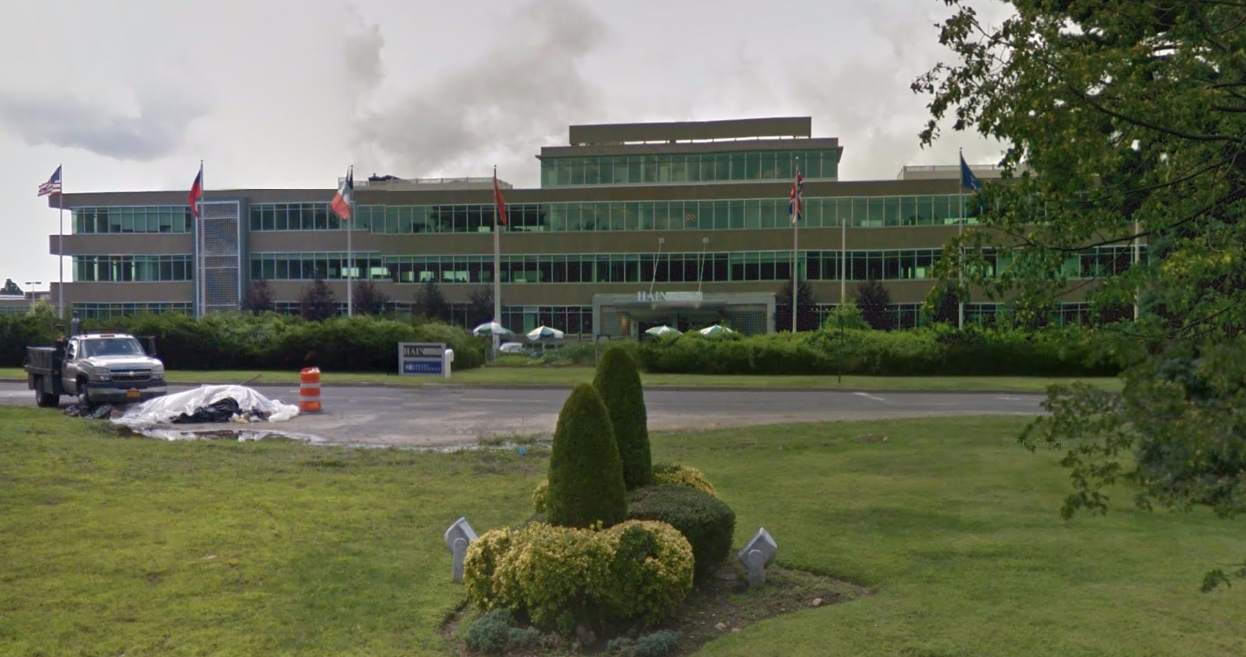The radium found at a Lake Success office complex appears to be isolated in one area, but it remains unclear how it got there, the company leading cleanup at the site said.
Soil tests and a review of documents have so far given no indication that radioactive materials were previously used or stored at 1111 Marcus Ave., R. Stan Phillips, the head of environmental remediation for Lockheed Martin, said in an interview last Thursday.
Elevated levels of radium were detected in contaminated soil Lockheed Martin trucked away from the 90-acre property on June 27. That soil was discolored with a blue and white pasty material mixed into dark, ashen earth, unlike any other soil workers have encountered, Phillips said.
“We don’t have a lot of history on why it was there, but we are comforted by the fact that we have not seen it again in any of the other excavations on the property,” Phillips said.
The state Department of Environmental Conservation, which is overseeing Lockheed Martin’s cleanup project, ordered Lockheed Martin to check for radioactive materials in its 17 monitoring wells at the site and submit a “comprehensive analysis” of any prior use of radioactive materials there.
The firm has submitted to the DEC and the state Department of Health a draft investigative work plan detailing how it will further examine the radioactive material that has been found and determine whether any more is present, Phillips said.
Kevin Frazier, a DEC spokesman, said the agencies have reviewed the plan and plan to give Lockheed Martin comments on it this week. The plan will become public once it is finalized, he said.
“After approval of the final work plan, DEC will continue to provide oversight during excavation of the radioactive soil and contaminated materials,” Frazier said in an email on Monday.
Groundwater samples have been submitted for testing, but results will not be ready until the end of August, Phillips said.
So far, no documents have shown that radioactive materials were ever used at the site, which was built in 1941 as a manufacturing facility for the defense contractor Sperry, Phillips said. That means the radioactive material may have been brought from somewhere else, he said, but the company has not reached any conclusions.
“It was all kind of a mixed area but it was very different from any of the other soil that was all around it,” Phillips said. “So it was definitely placed there for some reason.”
Lockheed Martin was supposed to submit to the DEC documents relating to the possible prior use, storage or disposal of radioactive material at the site by July 29, Frazier said Monday. He did not say whether the DEC has received the documents.
The radioactive soil was found in one of seven areas from which Lockheed Martin has been removing contaminated earth since May. The radium was first detected in a truckload of soil at a Pennsylvania disposal facility that was later returned to Lake Success.
Lockheed Martin did not test the soil for radioactive materials before sending it away because it had no reason to believe they were present, Phillips said.
The DEC halted the excavation work until Lockheed Martin added screening for radiological materials to its state-approved cleanup plan, Frazier said.
Excavations at the six other sites have since resumed and is monitored by AECOM, Lockheed Martin’s consultant, according to Phillips and Frazier.
No other excavated soil has shown any sign of radioactive material so far, Phillips said.
Meanwhile, the radioactive soil sits in a steel container near the hole from which it was removed, Phillips said. That and any other radioactive material will eventually be taken to a special disposal facility in Utah, he said.
Lockheed Martin has handled legally mandated cleanup efforts at the Lake Success site since 1996. The contamination was caused by Sperry, which dumped degreasers and other industrial solvents into underground dry wells, creating a 900-acre plume that has contaminated the groundwater north and west of the property.
Northwell Health, which occupies about 450,000 square feet of the office complex, conducted independent air quality tests inside the building after radium was discovered and found no reason for concern, Terry Lynam, a Northwell spokesman, said.
“We’ve confirmed that the building and the grounds are a safe environment,” Lynam said Monday.
The DEC announced last week that it is examining the possible past use of radioactive materials at 43 state and federal Superfund sites on Long Island, 22 of which are in Nassau County. The agency will require further testing and cleanup efforts at any areas of concern it identifies.
Newsday also reported in June that a document filed with the DEC indicated radioactive materials had been used at the former Grumman Aerospace facility in Bethpage, despite the DEC’s previous statements to the contrary.
Phillips said Lockheed Martin has been in regular contact with local elected officials as it investigates the radium’s origin.
The company, the DEC and independent consultants have assured Village of Lake Success officials that the isolated radium is no cause for alarm, Mayor Adam Hoffman said.
“I think what goes on there is on the up and up and up front with everybody,” Hoffman said.



